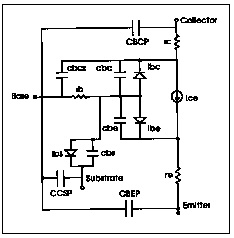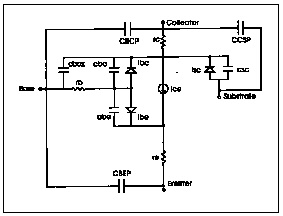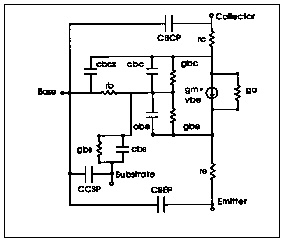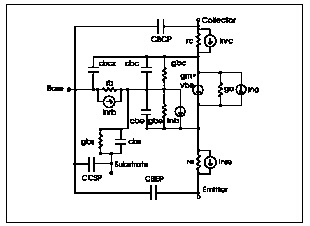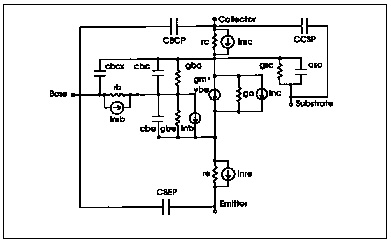




Scaling is controlled by the element parameters AREA, AREAB, AREAC, and M. The AREA parameter, the normalized emitter area, divides all resistors and multiplies all currents and capacitors. AREAB and AREAC scale the size of the base area and collector area. Either AREAB or AREAC is used for scaling, depending on whether vertical or lateral geometry is selected (using the SUBS model parameter). For vertical geometry, AREAB is the scaling factor for IBC, ISC, and CJC. For lateral geometry, AREAC is the scaling factor. The scaling factor is AREA for all other parameters.
The scaling of the DC model parameters (IBE, IS, ISE, IKF, IKR, and IRB) for both vertical and lateral BJT transistors, is determined by the following formula:
where I is either IBE, IS, ISE, IKF, IKR, or IRB.
For both the vertical and lateral, the resistor model parameters, RB, RBM, RE, and RC are scaled by the following equation.
where R is either RB, RBM, RE, or RC.
The direction of current flow through the BJT is assumed in the example BJT Current Convention. Use either I(Q1) or I1(Q1) syntax to print the collector current. I2(Q1) refers to the base current, I3(Q1) refers to the emitter current, and I4(Q1) refers to the substrate current.
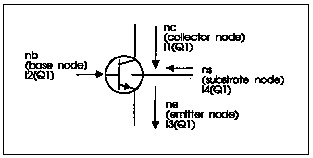
Star-Hspice uses four equivalent circuits in the analysis of BJTs: DC, transient, AC, and AC noise circuits. The components of these circuits form the basis for all element and model equations. Since these circuits represent the entire BJT in Star-Hspice, every effort has been made to demonstrate the relationship between the equivalent circuit and the element/model parameters.
The fundamental components in the equivalent circuit are the base current (ib) and the collector current (ic). For noise and AC analyses, the actual ib and ic currents are not used. Instead, the partial derivatives of ib and ic with respect to the terminal voltages vbe and vbc are used. The names for these partial derivatives are:
The ib and ic equations account for all DC effects of the BJT.
